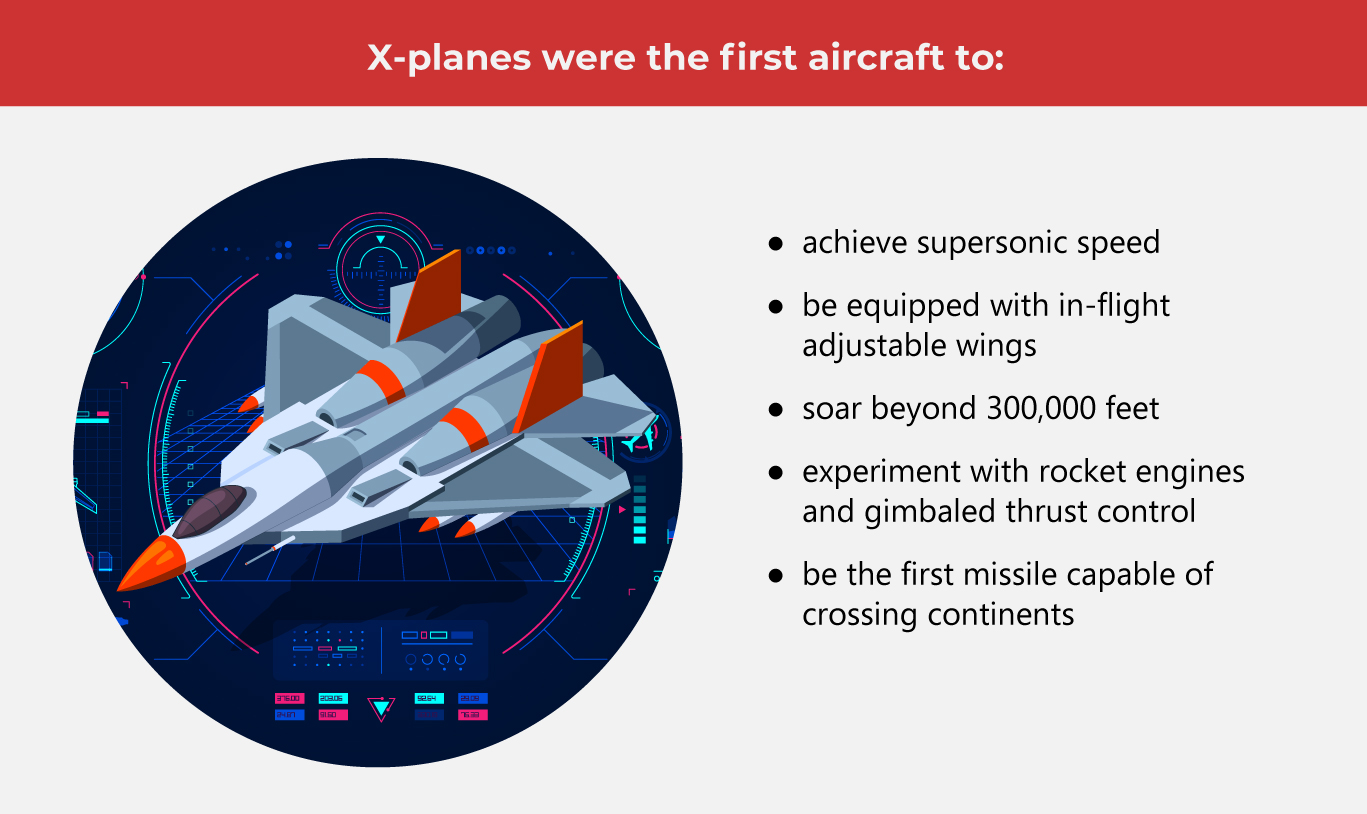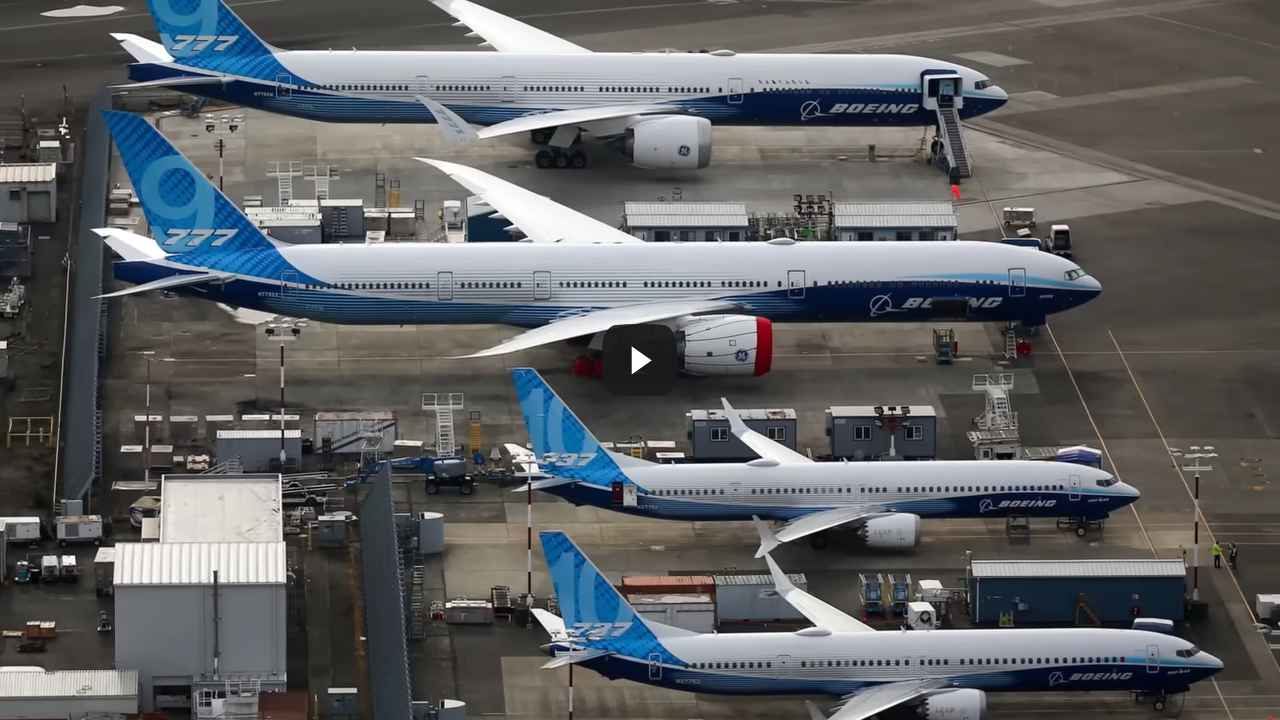The Rise of X-Planes Explained

From sustainability initiatives to enhanced military capabilities, X-planes are experiencing a resurgence as versatile platforms for innovation. These experimental aircraft, originally designed to push the boundaries of flight, now serve as testbeds for cutting-edge technologies in diverse areas like hypersonic travel, quiet supersonic flight, and environmental sustainability.
The U.S. X-Plane Program began with the historic X-1 breaking the sound barrier on October 14, 1947. Over time, it featured over 30 major research designs, including rocket-powered and conventional aircraft. These ranged from vertical takeoff prototypes to reconnaissance planes and unmanned missile testbeds, all advancing future-ready aerodynamics and astronautics.
 Since its inception in 1946, the X-Plane Program has pushed the boundaries of engineering capabilities while navigating challenges such as technical setbacks and equipment failures.
Since its inception in 1946, the X-Plane Program has pushed the boundaries of engineering capabilities while navigating challenges such as technical setbacks and equipment failures.
Over decades of rigorous product testing through manned test flights, the program has experienced approximately 15 major accidents and four pilot fatalities—three during the X-2 Program (1952–1956) and one in a 1967 X-15 mission.
Despite these incidents, stringent safety measures have produced no civilian casualties or property damage, highlighting the program’s commitment to innovation and safety in advancing aerospace technology.
Sustainable innovation in aerospace engineering
The X-66A is a critical step toward the US achieving net-zero carbon emissions by 2050, as part of the U.S. Aviation Climate Action Plan. To craft this X-plane, Boeing and NASA are transforming an MD-90 aircraft by shortening the fuselage and replacing its wings and engines. The design, featuring long, slender wings with engines fitted beneath and aerodynamic trusses, is known as the Transonic Truss-Braced Wing.
The MD-90, which serves as the basis for these innovative modifications, is a twin-engine airliner for short to medium-haul flights. Reliability testing will ensure the new X-plane follows future sustainability guidelines in aviation.
Developed under the Sustainable Flight Demonstrator project, the X-66A is designed to shape the future of more eco-friendly, efficient, and quieter commercial aircraft. The X-66A will undergo rigorous environmental tests to verify that its performance meets new standards. By incorporating precision machinery into its design, the aircraft aims to transform the aviation industry, benefiting travelers and American manufacturing capabilities.
The U.S. Air Force designates certain development programs as X-planes to support the creation of groundbreaking aircraft concepts. These research prototypes are primarily intended to test new design and engineering approaches that can later be integrated into future aircraft, rather than becoming full-production models.
With the X-66A, NASA is pushing the envelope in manufacturing excellence, demonstrating energy-efficient and emissions-reducing technologies that are vital for the future of aviation.
Developing a runway-independent X-plane
Meanwhile, Boeing’s subsidiary, Aurora Flight Sciences, has revealed the design of an X-plane featuring fan-in-wing (FIW) technology, providing high-speed, versatile mobility without relying on traditional runways in challenging conditions.
This project, a joint initiative between Aurora Flight Sciences and Boeing, showcases cutting-edge aerospace engineering and focuses on advanced product design and development for a vertical lift aircraft. Following the completion of the conceptual design review, the team aims to achieve the first flight within three years.
Developed under DARPA's SPRINT program, this design combines vertical take-off and landing (VTOL) capabilities with high speed to improve air mobility for Special Operations Forces (SOF). The aircraft will undergo accelerated stress tests to meet the rigorous performance standards for fast, versatile missions in complex environments.
The team is working on an autonomous aircraft demonstrator with a wingspan of 45 feet and the ability to carry a payload weighing up to 1,000 pounds. Powered by turbofan and turboshaft engines, the aircraft is expected to achieve a maximum true airspeed of 450 knots.
Testing the new X-plane
Aurora Flight Sciences has completed the first of three major tests in the SPRINT program, designed to assess the viability of FIW technology. Earlier this year, the company carried out a ground effect test using a model with a 4.6-foot wingspan and three lift fans.
Testing showed that the lift fans' downward airflow had little impact on the aircraft during hover, meaning there were no major issues. Additionally, the landing gear was positioned correctly to prevent unwanted tilting or pitching while the plane was on the ground.
Aurora plans to conduct wind tunnel tests before 2024 ends and the first part of 2025. These will include stability and control tests with a 9-foot wingspan model and a 5¼-foot semi-span model to examine the aerodynamic effects of embedded lift fans. Flight testing is scheduled for 2027.
Advantages of VTOL capabilities
VTOL aircraft are designed to operate in confined spaces, enabling them to take off, hover, and land without conventional runways. This innovative technology offers these significant advantages:
-
Access to confined spaces
VTOL aircraft can operate in tight spaces like urban environments or military zones, enhancing versatility and access to locations otherwise difficult to reach.
-
Enhanced mobility
With the ability to take off and land vertically, VTOL aircraft can bypass road congestion and operate in areas where conventional planes cannot, offering quicker, more direct routes.
-
Time-Saving
The ability to perform vertical take-off and landing means less travel time to and from airports, making VTOL aircraft ideal for rapid response missions or time-sensitive deliveries.
-
Reduced Infrastructure Dependence
Unlike conventional aircraft, VTOL models don't require long runways, reducing the need for large-scale infrastructure and allowing for operations from smaller or temporary sites.
-
Improved Military and Defense Operations
VTOL aircraft are ideal for military applications, allowing forces to deploy in remote areas or hostile environments with limited access, increasing operational flexibility.
-
Urban Air Mobility (UAM)
VTOL technology is a key enabler of future urban air transportation, offering solutions for congestion in cities and providing an alternative to traditional ground transport.
-
Environmentally Friendly
Some VTOL models are being designed to be electric or hybrid, which can significantly reduce their environmental footprint, supporting sustainable aviation.
To wrap up, X-planes continue to be at the forefront of aerospace innovation, driving progress in areas like sustainable aviation and advanced military applications. Through rigorous testing and cutting-edge design, these experimental aircraft are not only pushing boundaries but also paving the way for more efficient, environmentally friendly, and versatile air travel. As one of the Top 20 EMS companies in the world, IMI has over 40 years of experience in providing electronics manufacturing and technology solutions.
As one of the Top 20 EMS companies in the world, IMI has over 40 years of experience in providing electronics manufacturing and technology solutions.
We are ready to support your business on a global scale.
Our proven technical expertise, worldwide reach, and vast experience in high-growth and emerging markets make us the ideal global manufacturing solutions partner.
Let's work together to build our future today.
Other Blog



